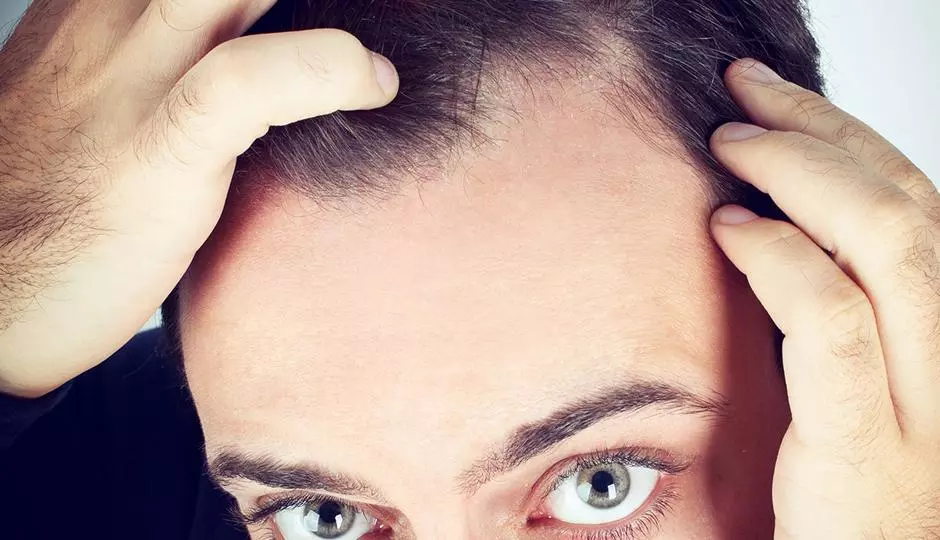Which type of hair transplant procedure to have is one of the most important decisions a patient needs to make: FUT/Strip, FUE, or FUE No Shave.
FUT
In FUT/strip procedures, doctors remove a narrow strip of scalp. The safest areas to perform this excision is the back lower portion of the scalp around to the sides above the ears. Technicians then remove individual follicular units from that strip by stereo-microscopic dissection. The wound edges are closed by sutures, leaving a single, generally fine scar.
FUE
In Follicular Unit Extraction (FUE) hair is removed through small circular punches directly from the surface of the scalp over a significantly larger area of the donor zone, leaving tiny, round, white scars. The size of the punches used is small enough to fit around individual follicular units which are naturally occurring groupings of 1-4 hair follicles.
FUE NO SHAVE
The FUE No Shave procedure is an extension of the FUE technique. It is necessary for typical FUE procedures to buzz the donor area (back of the head) where grafts are extracted with a zero guard length. Just like a regular haircut, the hair grows back in the following weeks. However, for some people cutting hair in the donor area could pose an inconvenience or reveal that they had a hair transplant. Using the FUE No Shave technique, hair is harvested from the donor area by cutting individual hair follicles with tiny scissors and then harvesting them with the small circular punches. Patients can leave the procedure with a considerable amount of confidentiality and resume normal activities even faster.
FUT
FUE
FUE No Shave
Process
Not required to shave head.
Requires the donor area of their head be cut short.
Not required to cut hair short.
Donor Source
Donor strip is removed from the back and side of the head.
Each graft is harvested individually from the safe zone
Each graft is harvested individually from the safe zone
Length of surgery
Depends on the number of grafts. Ideal for large cases. Majority of cases are completed in one session.
Depends on the number of grafts. Only a certain number of grafts can physically be done in one session.
Depends on the number of grafts. Most tedious and potentially longest of procedure types. Not ideal for very large cases.
Recovery
Sutures are removed 10 days to two weeks after procedure
No Sutures, back to normal activities within a few days
No Sutures, back to normal activities within a few days
Scarring
Leaves linear scar
Minimal dot scarring
Minimal dot scarring
Cost
More cost effective
Prices will exceed FUT
Prices will exceed FUT and normal FUE
Scarring: FUT vs FUE
Assuming you are a candidate for both types, taking into consideration your hairstyle is one of the most important factors when deciding which procedure type is best for you. If you ever think there could be a possibility that you would shave your head or wear short hair at any point in time, then FUT may not be for you. While FUE is not “scarless,” any scarring is very insignificant, and Dr. Gray employs a particular method to ensure no donor area is over-harvested.
Graft Quality: FUT vs. FUE
FUT/Strip surgery and FUE (Follicular Unit Extraction) use separate methods for harvesting grafts, and due to the characteristics of these methods, the strip surgery usually produces a fatter graft than the FUE type. However, with good FUE technique, there should be minimal transection of the harvested follicles. In other words, either procedure type should produce excellent follicles for transplantation. When the argument is strongly made against either a strip procedure or an FUE technique, it suggests to Dr. Gray that the source of the reasoning is not proficient at the method they do not prefer. Dr. Gray has proficiency in both techniques and can appreciate the merits of each type so that the only real consideration is what is in the best interest of his patients.
Donor Source: FUT vs FUE
Debate exists as to the success rate regarding FUE versus FUT grafts based on the donor zone. The concern is that because FUE grafts are extracted from a broader region on the scalp than in a FUT procedure, follicles may be lost to balding over time. HT&RC's stance on the issue is that with careful planning on the part of the surgeon, any issues thought to be associated with donor hair are mostly non-existent. Dr. Gray will not even advise FUE for a patient who lacks a sufficient amount of viable donor hair in the safe zone. Additionally, in FUE cases Dr. Gray only extracts hair from established safe donor sites. To summarize, the donor hair for all techniques is harvested from the safe zone.
Recovery: FUT vs FUE
The recovery for FUT and FUE No Shave is quicker, cosmetically, since there is no need for the donor area to be shaved, and longer hair can completely cover the donor incision immediately after the FUT procedure. Many business professionals favor FUT or FUE No Shave hair transplants as there is significantly less downtime from work for any cosmetic reasons. Most can return to work within one or two days. However, for strenuous physical activity, recovery time is the same as it is for FUE. We need to protect the newly transplanted grafts no matter which procedure method is employed.
In contrast, cosmetically, the classical FUE procedure requires the donor area be clipped very close to the scalp, which can make evidence of surgery more noticeable for to 2 or 3 weeks post op until the hair grows back long enough to camouflage the harvested area. Once the healing is complete, and any redness has subsided, the hair can be cut shorter. Likewise, strenuous physical activity restriction is mostly the same as it is for FUT and FUE No Shave procedures to protect the newly implanted follicles.
If you have questions about a specific method or would like to know if you are a candidate for hair restoration surgery, contact us for a consultation to discuss your many hair options. No matter your hair loss needs, HT&RC can present you with a way forward—an opportunity to look and feel like yourself again. Come see us for any hair loss needs.






